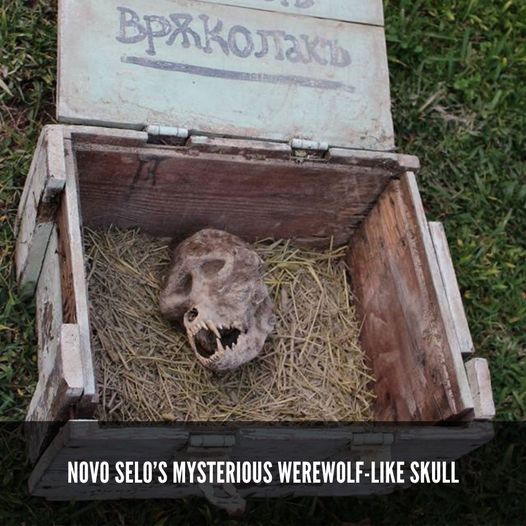In a fascinating discovery that blurs the lines between mythology and reality, a Bulgarian farmer, Trayche Draganov, claims to have unearthed a werewolf-like skull in the village of Novo Selo, Republic of Macedonia. This intriguing find has captured the attention of historians, wildlife experts, and enthusiasts of the supernatural.
The Discovery by Trayche Draganov
In a remarkable incident that intertwines the realms of the mythical and the real, Trayche Draganov, a farmer from Novo Selo, Republic of Macedonia, made a startling discovery that captured the imagination of both locals and the wider community. Draganov’s find, a skull bearing an uncanny resemblance to legendary werewolf depictions, has since become a subject of intrigue and speculation.
Trayche Draganov, while ploughing a new section of his field, stumbled upon an unusual and mysterious object. It was a box, securely chained shut, buried beneath the soil of his farm. The discovery itself was unexpected and unusual, especially considering the rural setting and the mundane nature of the task at hand.

Upon opening the box, Draganov found within it a skull that appeared to be wolf-like in most respects. However, what set this skull apart was its enlarged cranium, a feature not typically associated with wolves but more akin to primates. This peculiar characteristic immediately piqued interest and led to various theories about the skull’s origins and identity.
Documentation by Filip Ganev
The account came to light through Filip Ganev, a historian conducting research in Novo Selo for his book on the Balkan Wars. Ganev, having met Draganov, had the opportunity to examine and photograph the skull. According to his observations, the skull displayed wolf-like features but with an enlarged cranium, a characteristic typically seen in primates, not wolves.
Analysis by Wildlife Officials
Ganev’s photographs were later shared with government wildlife officials for further examination. Upon review, the officials suggested that the skull likely belonged to a wolf suffering from Paget’s Disease. This rare condition can cause the skull to increase in size and change in shape, leading to a more human-like appearance.
Paget’s Disease of bone is a chronic disorder that can result in enlarged and misshapen bones. The officials’ explanation posits that the wolf suffered from this condition, accounting for the skull’s unusual size and human-like appearance. This explanation, while plausible, has not dampened the fascination with the skull’s more mythical interpretations.
The Intersection of Myth and Reality
The discovery of the skull in a region rich in werewolf folklore adds a layer of mystery and intrigue. In many cultures, werewolves are depicted as humans with the ability to transform into wolves, a myth that has persisted through the centuries. The finding of a skull that bears a resemblance to these mythical creatures provides a tangible, albeit explainable, link to these ancient legends.

The werewolf-like skull discovered by Trayche Draganov presents a curious case of an ostensibly mundane find assuming mythical proportions. While wildlife experts lean towards a scientific explanation, the discovery remains shrouded in mystery and continues to captivate the imagination. It serves as a reminder of the enduring power of folklore and the ways in which it can influence our interpretation of the world around us. Whether a product of disease or a relic of mythic beasts, the skull of Novo Selo holds a special place in the folklore and mystery of the region.
